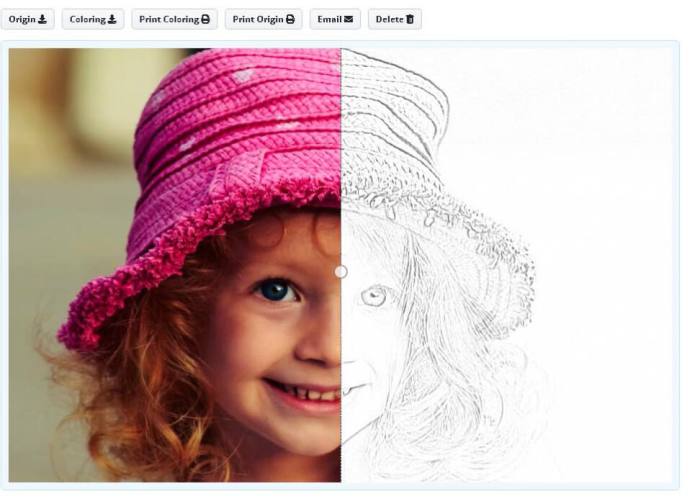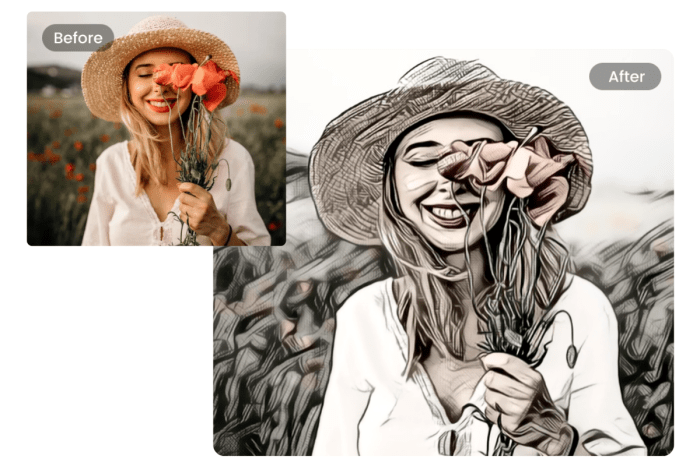Technical Aspects of Transforming Photos into Coloring Pages: Coloring Book Your Photos

Coloring book your photos – Turning your favorite snaps into stunning coloring pages is easier than you think, especially with the right tools and techniques. It’s all about stripping away the color and detail, leaving behind clean lines perfect for creative expression. This process involves several key steps, from choosing the right software to understanding image resolution.
Software and Applications for Photo-to-Line Art Conversion, Coloring book your photos
Several software options and mobile apps excel at converting photographs into line art. The best choice depends on your technical skills and budget. Features to prioritize include adjustable line thickness, smoothing options to clean up jagged lines, and the ability to export in high-resolution formats suitable for printing.
- Adobe Photoshop: A professional-grade image editor offering powerful tools for precise line art creation. Its advanced features allow for detailed control over line weight, texture, and overall aesthetic. Photoshop’s extensive features are ideal for creating complex and detailed coloring pages.
- GIMP (GNU Image Manipulation Program): A free and open-source alternative to Photoshop, GIMP provides many similar features, albeit with a steeper learning curve. It’s a powerful tool for those comfortable with image editing software and wanting to avoid subscription costs.
- Autodesk Sketchbook: This intuitive digital painting and sketching software offers a user-friendly interface with features like line smoothing and various brush styles, perfect for creating clean and simple line art.
- Mobile Apps: Numerous mobile apps (like those found on the App Store or Google Play) offer simplified photo-to-line art conversion. Many offer quick, automated processes, though control over the final result may be limited compared to desktop software.
Image Resolution and File Format
Image resolution significantly impacts the quality of your final coloring page. High resolution ensures crisp, clean lines when printed. A low-resolution image will result in blurry, pixelated lines unsuitable for coloring. Commonly used file formats include JPEG (for photographs), PNG (for line art with transparency), and PDF (for print-ready files). For optimal results, aim for at least 300 DPI (dots per inch) resolution.
Using a higher resolution ensures that even when the image is printed, details will remain sharp and clear, allowing for precise coloring. For example, a 300 DPI image at A4 size will produce a much clearer and more detailed coloring page than a 72 DPI image of the same size.
Process Flowchart
A simplified flowchart illustrating the process:[Imagine a flowchart here. The boxes would represent the following steps: 1. Select a high-resolution photograph. 2. Import the photo into chosen software.
3. Adjust image contrast and brightness. 4. Apply a filter or effect to create line art (e.g., threshold, sketch effect). 5.
Refine lines and clean up artifacts. 6. Adjust line thickness and style. 7. Export as high-resolution PNG or PDF.] The flowchart would visually represent the sequential steps, with arrows connecting each stage to the next.
This visual representation would help clarify the process.
Yo, ever tried coloring bookin’ your own photos? It’s mad fun, right? But if you’re lookin’ for some serious beast mode inspiration, check out this brilliant beasts coloring book ; the designs are sick! Then, after you’ve gotten your fill of fantastical creatures, get back to coloring your own pics – it’s a whole new level of creative freedom, fam!
User Experience and Design Considerations

Creating a killer photo-to-coloring-page app requires more than just technical chops; it’s all about making the user experience smooth as silk. Think of it like this: you’re not just building software; you’re crafting a creative playground. The easier it is to use, the more people will jump in and unleash their inner artist.The ideal user interface should be intuitive and easy to navigate, even for someone who’s never used a similar app before.
Think clean lines, vibrant colors (but not overwhelming!), and a layout that flows naturally. Navigation should be straightforward, with clear calls to action that guide users through the process. It’s all about making the experience enjoyable and stress-free.
Ideal User Interface Design
A well-designed user interface prioritizes simplicity and efficiency. The app should feature a clear and concise workflow, guiding users from photo upload to coloring page download with minimal clicks. Consider a minimalist design with large, easily tappable buttons and clear visual cues. Progress indicators can help users track their progress and manage expectations. For example, a progress bar showing the conversion process adds a touch of reassurance.
The color palette should be consistent and visually appealing, reflecting the creative nature of the app. Think bright, cheerful tones that inspire creativity. Error messages should be clear and helpful, guiding users towards solutions rather than simply stating the problem.
Ensuring Printable and Colorable Coloring Pages
Generating coloring pages that are easy to print and color is crucial. The software should offer options to adjust the line thickness and detail level. Thicker lines are easier for younger users to color, while thinner lines provide more detail for older users or those with more advanced coloring skills. The resolution of the outputted image needs to be high enough to prevent pixelation when printed.
A setting allowing users to select the paper size (A4, Letter, etc.) ensures compatibility with standard printers. The generated coloring page should also be optimized for standard color printing processes, ensuring accurate color reproduction. Finally, the file format (e.g., PDF, PNG) should be universally compatible.
Importance of User Feedback and Iteration
User feedback is the lifeblood of any successful app. Gathering feedback through surveys, in-app feedback forms, and user reviews is essential for continuous improvement. This feedback can reveal usability issues, identify areas for improvement in the design, and even inspire new features. Iterative design, based on user feedback, is crucial for creating a user-friendly and enjoyable experience.
For instance, if users consistently report difficulty uploading certain image formats, the developers can adapt the app to handle these formats more effectively. Analyzing user behavior through analytics can also identify areas needing refinement. For example, if users frequently abandon the app during a specific step, this indicates a potential usability problem that needs addressing.
Image Upload Screen Mock-up
Imagine a screen with a large, central button that says “Upload Your Photo.” Below it, a smaller, secondary button might say “Choose from Gallery.” A subtle visual cue, perhaps a dashed Artikel or a faint photo placeholder, could indicate where the uploaded image will appear. Beneath the buttons, a small text message could read, “Supported formats: JPG, PNG, GIF.” This clear and simple interface guides users through the initial steps efficiently and effectively.
The overall aesthetic should be clean and inviting, reinforcing the app’s creative purpose.
FAQ Corner
What types of photos work best for conversion into coloring pages?
Photos with good contrast and clear subjects work best. Avoid photos that are too blurry or have excessive detail, as this can make the line art difficult to color.
Can I use copyrighted images to create coloring pages for sale?
No, using copyrighted images without permission is illegal. Only use images you own the rights to or have obtained permission to use.
What’s the best way to sell my digital coloring pages?
Online marketplaces like Etsy, Creative Market, or your own website are good options. Consider offering various pricing tiers and bundles.
What if I don’t have any artistic skills?
Many software programs offer automated line art conversion, requiring minimal artistic skill. Focus on choosing high-quality source images for best results.
